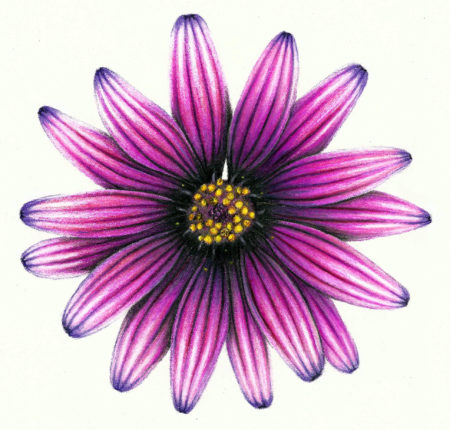

This gives you lots of control, since it’s easy to add more color… but can be tricky to take it away. Then pick up another color and work your way around.Īlways start light and slowly darken your shadows. Use a single color and go around the flower, petal by petal. Now begin filling in the darker areas of your bloom, working gradually. This base also doubles as highlights later on, as you start to add darker tones. This will establish a “base” color from which you’ll build the hues and textures. But it’s also the most fun and - believe it or not - relaxing.Īfter you’ve mapped out the details, color in the flower using the lightest of light touch. Shade and HighlightįYI: this step is the longest and most painstaking of the whole process. Focus on things like the petal’s veins or the pollen in the center of your flower. With the lightest colored pencil still in your hand, sketch in the smaller, more intricate details.

Sketch large, general shapes, like the outside of the petals and leaves. Instead, sketch out your flower using the lightest of your colored pencils. Draw the Basic Shapesīut don’t draw ’em in graphite! The graphite will clash with the flower’s bright colors and can be really hard to remove from your drawing later. This is the secret that brings dimension and transforms a 2D doodle into a lifelike drawing. It might seem like a no-brainer, but it’s important to select at least three colors - a light, medium and dark tone. Happy sketching! Vibrant Colored Pencil Flowersīefore putting pencil to paper, you’ve gotta know which colors to use. Once you get comfy with these techniques, you can interpret and apply them to any type of flower (not to mention the rest of your colored pencil projects). Start with a photo you love, or even a real bloom, and see how far you can get!
Coloring flowers with colored pencils how to#
You know those amazing flower drawings that almost look real? That’s the magic of colored pencil, and learning how to do it is easier than it seems.


 0 kommentar(er)
0 kommentar(er)
